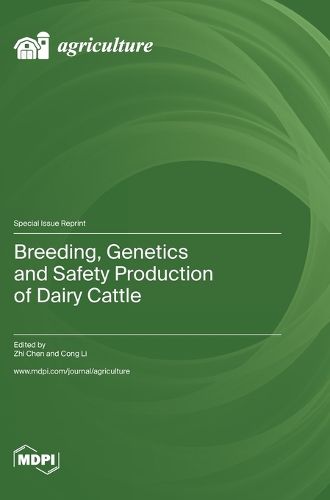Readings Newsletter
Become a Readings Member to make your shopping experience even easier.
Sign in or sign up for free!
You’re not far away from qualifying for FREE standard shipping within Australia
You’ve qualified for FREE standard shipping within Australia
The cart is loading…






This title is printed to order. This book may have been self-published. If so, we cannot guarantee the quality of the content. In the main most books will have gone through the editing process however some may not. We therefore suggest that you be aware of this before ordering this book. If in doubt check either the author or publisher’s details as we are unable to accept any returns unless they are faulty. Please contact us if you have any questions.
The integration of various omics information-such as DNA, RNA, protein, and epigenetic regulation-brings new opportunities for the mining of important economic traits of animals and the analysis of molecular genetic mechanisms. Over the last three decades, world milk production has increased by more than 59%, from 530 million tonnes to 843 million tonnes. However, the genetic mechanisms behind milk fat traits remain largely undetermined. Milk is rich in fatty acids, proteins, and eight essential amino acids needed by the human body. The fatty acids in milk, namely, dodecylic acid, myristic acid, stearic acid, and palmitic acid, are the main energy substances in the human body, accounting for approximately 5, 10, 8, and 27 % of total fatty acids, respectively. Thus, decoding the genetics of milk fat traits can have a potential impact on product development, international trade, and consumption of milk components. This Special Issue focuses on applying the aforementioned advances to explore gene regulation and its molecular mechanisms in milk fat traits. The topics include but are not limited to: Research and application surrounding the genetic basis of important milk fat traits; Mining and function of excellent genetic resources for milk fat traits; Genetics of nutrition metabolism regulation and efficient production of milk fat; Epigenetic research on genes implicated in milk fat traits; High-throughput sequencing research surrounding genetics of milk fat traits; Construction of gene (including circRNA, lincRNA, miRNA, and mRNA) expression regulatory network maps.
$9.00 standard shipping within Australia
FREE standard shipping within Australia for orders over $100.00
Express & International shipping calculated at checkout
This title is printed to order. This book may have been self-published. If so, we cannot guarantee the quality of the content. In the main most books will have gone through the editing process however some may not. We therefore suggest that you be aware of this before ordering this book. If in doubt check either the author or publisher’s details as we are unable to accept any returns unless they are faulty. Please contact us if you have any questions.
The integration of various omics information-such as DNA, RNA, protein, and epigenetic regulation-brings new opportunities for the mining of important economic traits of animals and the analysis of molecular genetic mechanisms. Over the last three decades, world milk production has increased by more than 59%, from 530 million tonnes to 843 million tonnes. However, the genetic mechanisms behind milk fat traits remain largely undetermined. Milk is rich in fatty acids, proteins, and eight essential amino acids needed by the human body. The fatty acids in milk, namely, dodecylic acid, myristic acid, stearic acid, and palmitic acid, are the main energy substances in the human body, accounting for approximately 5, 10, 8, and 27 % of total fatty acids, respectively. Thus, decoding the genetics of milk fat traits can have a potential impact on product development, international trade, and consumption of milk components. This Special Issue focuses on applying the aforementioned advances to explore gene regulation and its molecular mechanisms in milk fat traits. The topics include but are not limited to: Research and application surrounding the genetic basis of important milk fat traits; Mining and function of excellent genetic resources for milk fat traits; Genetics of nutrition metabolism regulation and efficient production of milk fat; Epigenetic research on genes implicated in milk fat traits; High-throughput sequencing research surrounding genetics of milk fat traits; Construction of gene (including circRNA, lincRNA, miRNA, and mRNA) expression regulatory network maps.